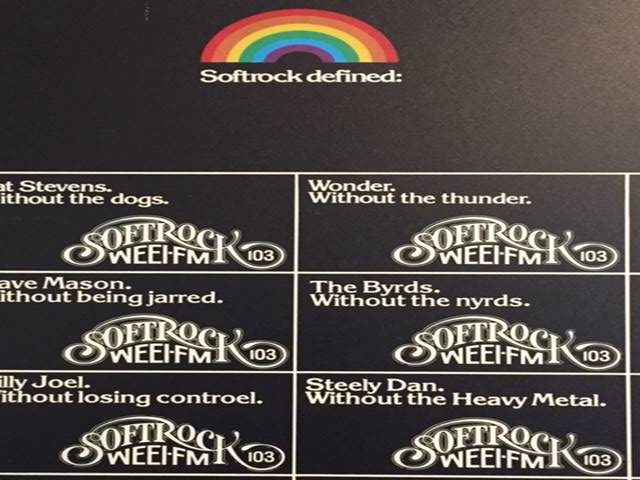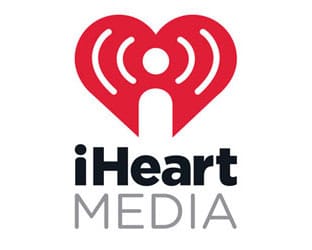RBR+TVBR OBSERVATION
The lemmings are here! The lemmings are here!
“What, pray tell, are you talking about, dear sir?,” say the denizens of Effem, a once-proud community that has faded in luster over the last two decades, a victim of technological progress and the inability to evolve, inspire, invent and make consumers intent.
Lemmings, for those unfamiliar with the Arctic rodent, are known for various things. There is an unfounded rumor regarding mass suicide. And, there is the metaphor frequently used to describe people who go along unquestioningly with popular opinion, with potentially dangerous or fatal consequences.
For years, lemmings have served as the greatest, most popular group of influencers in Effem — known to the outside world as “consultants.” As 2018 comes to a close, the lemmings are very much at work, helping iHeartMedia and Townsquare Media capture a group of consumers most likely to use radio.
“The Breeze” is swaying Radio. Soft AC is exploding. But, is it a smart move, or just another reactionary wave from companies looking for a quick fix to long-term problems?
RBR+TVBR reached out to a veteran consultant known for bring “Softrock” to Boston — with boffo results — more than 40 years ago for his view on the resurgence of Soft AC.
BIRTH OF A ‘BREEZE’
On April 13, 2016, KISQ-FM in San Francisco, an iHeart-owned radio station, flipped from a once-popular Classic Soul format as “Kiss FM” to Soft AC, using the brand “The Breeze.”
The move proved to be an eventual success. KISQ today is the No. 1 music station in San Francisco, based on the November 2018 Nielsen Audio survey (rival KOIT-FM, owned by Entercom, defeated “The Breeze” with its all-Christmas music presentation in December).
Now, some 2 1/2 years after “The Breeze” swept through the Bay Area, it has been introduced to a multitude of locales, and by other radio station owners.
In the last week alone, several “Breeze” appearances were seen. On Wednesday, Townsquare’s Hot AC WMSX-FM “Mix 96.1” in Buffalo-Niagara Falls made the move to “The Breeze,” blending classic hits heard across town on WECK with 1980s and 1990s songs. On Dec. 27, the midday hour featured a segue of Olivia Newton-John’s “Hopelessly Devoted to You” into Lifehouse’s “You and Me.” Other tracks heard include Expose’s “I’ll Never Get Over You” and Billy Joel’s “Piano Man.” The 2pm hour started with Joey Scarbury’s theme from “The Greatest American Hero.”
But, it is iHeart that is seeking to bring “The Breeze” brand across the U.S. In Albuquerque, an FM translator is housing the Soft AC blend. As reported by Lance Venta’s Radio Insight, iHeart is now competing directly against KRKE-FM, owned by Vanguard Media.
And, it comes after Vanguard “protected” itself from a potential “Breeze” arrival in Grants, N. Mex., by taking a translator and putting its own “Breeze” on the air, establishing a trademark claim in the tiny city. In Phoenix, iHeart claimed branding rights.
“The Breeze” also blew north, with Stingray Digital Media bringing the Soft AC blend — with some CanCon acts, for sure — to Vancouver and Edmonton.
All of this activity came after iHeart on Nov. 8 flipped KBEB-FM 92.5 in Sacramento from Country to “The Breeze,” and the notable change of iHeart’s WISX-FM 106.1 in Philadelphia to Soft AC as “The Breeze,” on Nov. 12.
The WISX change didn’t make David Field too happy. The Entercom CEO on Sept. 28 closed on its $57.5 million purchase of WBEB-FM in Philadelphia, and had brought back the
“B101.1” branding as part of a plan to become the top AC station in the market.
Now, WBEB is up against a station in the 2pm hour on Dec. 27 playing Rod Stewart’s “Have I Told You Lately,” Tina Turner’s “What’s Love Have To Do With It,” and Phil Collins’ “A Groovy Kind of Love.” B101.1 is still airing Christmas music — at least the Jackson 5 song we heard at 2:11pm.
Entercom reacted by flipping Top 40 WDZH-FM 98.7 in Detroit to “The Breeze,” putting the station up against iHeart’s AC WNIC-FM.
Meanwhile, there are “Sunny” arrivals and “Easy” remains a top choice in South Florida.
Big-market “Breeze” entries are being talked about, including New York and Los Angeles. But, have radio operators rushed to place a format in a market where the opportunity to attract listeners and advertisers simply isn’t as strong as trying to beat your “competitor” to the punch?
In 1984, a surge in Contemporary Hit Radio stations was seen thanks to the success of WHTZ-FM (Z100) — a tiny radio station that came out of nowhere to famous rise to No. 1 under the guidance of Scott Shannon. This came after a lesser-successful surge in “Rock of the ’80s” stations solely thanks to the work of Rick Carroll at KROQ-FM in Los Angeles in 1982. Later, the Lemmings misread some research suggesting “less talk and more music” was what listeners wanted. Effem lost guitars and morning monkeys and gained “The Coast,” with lots of very soft music and branding replacing personality. This was WFLC-FM 97.3 in Miami in Spring 1990.
Wait a second … Isn’t this what “The Breeze” is trying to do, nearly three decades later?
It sure seems like it.
But, what happened to The Coast?
That’s a lesson the Lemmings never seemed to digest. In the second half of 2010, The Coast was at war with WLYF-FM 101.5 “Lite FM,” a ratings stalwart under the leadership of former PD Rob Sidney. The Coast attempted to set itself apart from Lite FM by playing “Hard To Say I’m Sorry” and “Getaway” by Chicago. That was radical for The Coast. It also had an all-80s weekend that proved successful.
The next three years would see The Coast get hotter, until an eventual change to Top 40 in January 2014. That’s because, in November 2010, “Easy 93.1” arrived, with WFEZ-FM becoming a sister to WFLC-FM in Miami. The Battle of the Barrys ensued, with “Easy” and “Lite” going after Manilovers.
Seriously.
Today, with The Breeze blowing all over the U.S., the top market for Soft AC — South Florida — deserves a close-up look for those who believe a bunch of old songs for older people is the solution to their ratings woes and billing ills.
While it is branded as “Easy,” WFEZ is hardly a sleepy home to songs your Mom and Dad made out to in a station wagon. The 2pm hour on Dec. 27 included Tears For Fears’ “Head Over Heals,” Natalie Imbruglia’s “Torn,” and Andy Gibb’s “I Just Want to Be Your Everything.”
WLYF, today an Entercom station, is a far cry from its days under Sidney. Gone are the Celine, Cher, Babs and Barry tunes of yesteryear. Out of a commercial break, it cued up U2’s “I Still Haven’t Found What I’m Looking For.”
Over on WFEZ, Megan Trainor’s “Like I’m Gonna’ Lose You” was on the air.
THE ‘SOFTROCK’ STORY

When speaking with managers, Clark Smidt, Managing Partner of Boston-area consultancy Broadcast Solutions, has often been asked to choose between programming and sales. For him, “Great radio is both and you’d best know what you’re doing on all sides —engineering, branding and people, too.”
Smidt is all for the Breezy solutions.
It’s of little surprise to hear Smidt say this. He created what today may be best-described as a mass-appeal Adult Alternative format for CBS Radio in Boston in 1977. His creation: “Softrock 103,” WEEI-FM.
For five years, “Softrock 103” carved itself a niche by playing softer songs from artists typically found on Album-Oriented Rock (AOR) stations like WBCN-FM or WCOZ-FM. It competed against no less than six AC stations in the crowded Boston market. It worked.
“The format would stand up today, with or without updates to the 1980 playlist,” Smidt argues.

But, unlike “The Breeze,” WEEI-FM under Smidt had some clever branding. Still talked about today are promotions that branded “Softrock 103” as the home for “The Eagles. Without the turkeys,” or “Joni. Without the baloni,” in reference to Joni Mitchell.
Although WEEI-FM’s demise as “Softrock 103” came in late 1982 as CBS Radio got hot with the “HitRadio” rollout across the U.S., much of what was pioneered by Smidt could be used as a blueprint for those seeking to make a “Breeze” stay around for a while — rather than serve as the industry’s latest hot-to-not attempt to lure listeners and new advertisers.
Smidt recalls, “WEEI-FM was a combination of smoothly blended, great music; classy and conversational announcers; local two-minute Boston features, which were sponsored; information you could use; unique jingles; and an award-winning brand campaign on TV.”
That involved fluorescent rainbow billboards all over town. That may not work in 2019, but Smidt’s other ingredients could.
THE SALES DILEMMA
In Spring 1996, WRLX-FM 92.1 in West Palm Beach, Fla., was the No. 1 radio station. With a Class C3 signal, this station scored in the Arbitron ratings for the market with a Soft AC format closer to Beautiful Music than anything heard on the radio today. By May 1997, WRLX was what many would see as the precursor to “The Breeze” today.
Writing in Radio & Records, columnist Mike Kinosian described the “chess game” between WRLX and crosstown WEAT-FM, which had also come out of Beautiful Music to become an AC with softer leanings.
In April 1998, the battle had evolved in a big way: WRLX, along with two other FMs (including today’s market leader, WRMF) and three AMs, were sold by Fairbanks Communications to iHeart predecessor Clear Channel for $85 million.
Clear Channel didn’t keep all of those properties. Instead, WRLX, WRMF, an AM coming from Fairbanks and an AM in Fort Lauderdale were swapped to now-defunct James Crystal Broadcasting in exchange for what is today WOLL-FM “Kool 105.5” and $47 million cash.
One year later, in April 1999, WRLX’s Soft AC format would fall victim to The Lemmings.
It became “Jammin’ Oldies,” the hottest format of the future some 20 years ago.
That lasted until January 2001. Today, it is “Mia 92.1,” a Latin Pop station tied to iHeartLatino.
One of the key issues with WRLX in the mid-1990s was, despite its top ratings, it couldn’t attract advertisers.
Can “The Breeze,” given its inclusion of songs from the mid-1970s and seemingly 45+ focus?
That may take work, but it marks a realization for radio: With Spotify, YouTube, Pandora, and Sirius XM eroding the younger half of the total listening audience, radio’s best play for ensuring it gets the largest “share of ear” may rest in attracting those most comfortable and familiar with using the radio in the first place.
That would be the 45+ crowd — individuals who remember that “Arthur’s Theme” came from a movie with Dudley Moore, or the chorus to Orleans’ “Still The One.”
Can advertisers be swayed, finally, into placing advertisements on a station attracting those largely outside of the 18-49 demographic marketers still cling to?
Smidt opines, “The 45+ listener is hip, aware, contemporary and knows music! Keep the music fresh and familiar. Hot AC got beat by becoming too new, too fast. On the contrary, Oldies, Classic Hits and Soft ACs of years past failed to properly evolve while keeping the real classics in rotation.”
Smidt also points to fresh copy and commercials that sound as good as the music. But, that’s a recommendation for every radio station — not just a “Breeze.”
Whether more “Breeze” arrivals are on the way or not is ultimately up to the nation’s radio station ownership groups. Should a strong gust of wind send it into your market, as a competitor or recently revamped station in your cluster, what advise should you glean from Smidt?
Content is king.
“It all comes down to the right way to present the content,” he says. “It could be ‘The Breeze,’ or not, but it must involve proper curation, style and attention to detail. This brings more audience, and profit to enjoy.”
Perhaps that is the industry’s solution to stop listening to the lemmings by becoming the media’s mountain lion. The ability to lead without insisting others follow will be the calling card of success for an industry lacking true innovation and fresh ideas.
A nice “Breeze” is enjoyable only as long as it lasts. Let’s hope it does not foretell Radio’s hazy shade of winter.
The views expressed in an RBR+TVBR Observation are those of the editorial staff only and do not reflect the views of Streamline Publishing or its other publications.





